
Tracking plant growth and pest development is essential for timely decisions throughout the growing season.

Tracking plant growth and pest development is essential for timely decisions throughout the growing season.

Southern Indiana took the lion’s share of precipitation in April with some locations getting over twice the amount of rain than normal for that month.
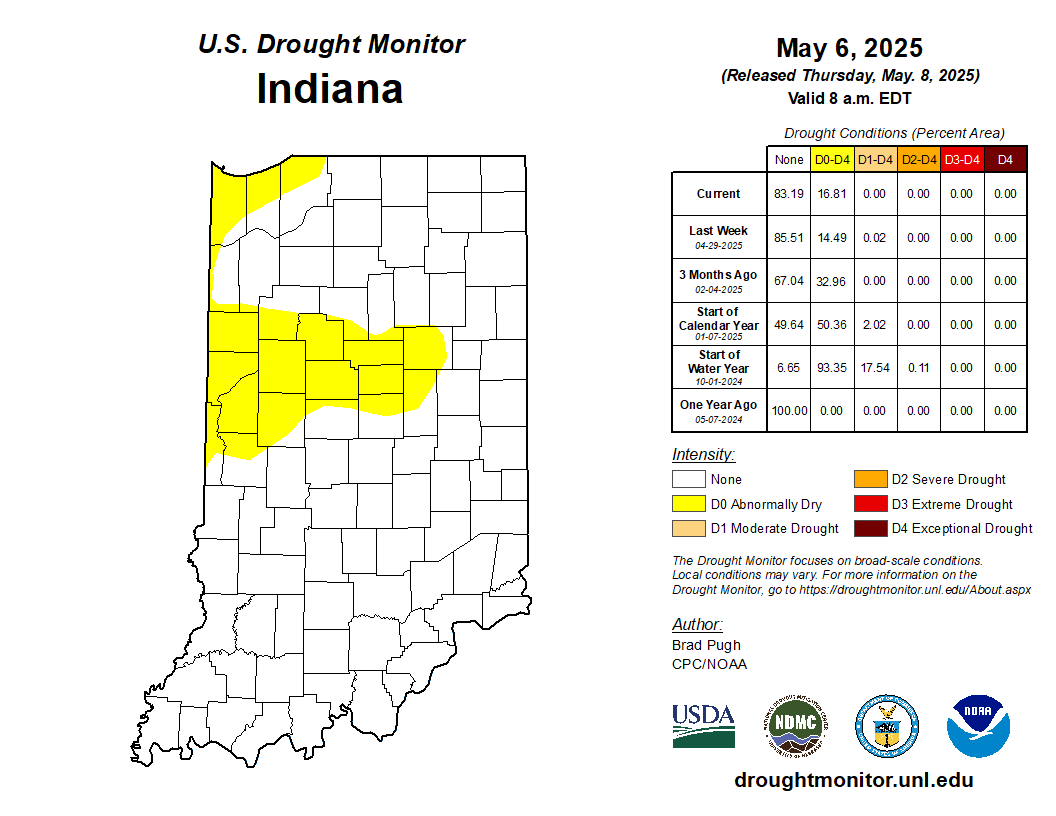
Southern Indiana took the lion’s share of precipitation in April with some locations getting over twice the amount of rain than normal for that month.
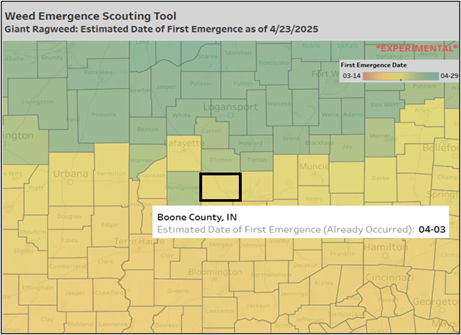
Midwestern farmers have faced a buildup of pesticide resistance in pigweeds (waterhemp and Palmer amaranth), highlighting the importance of scouting to detect weeds early in their growth stages.
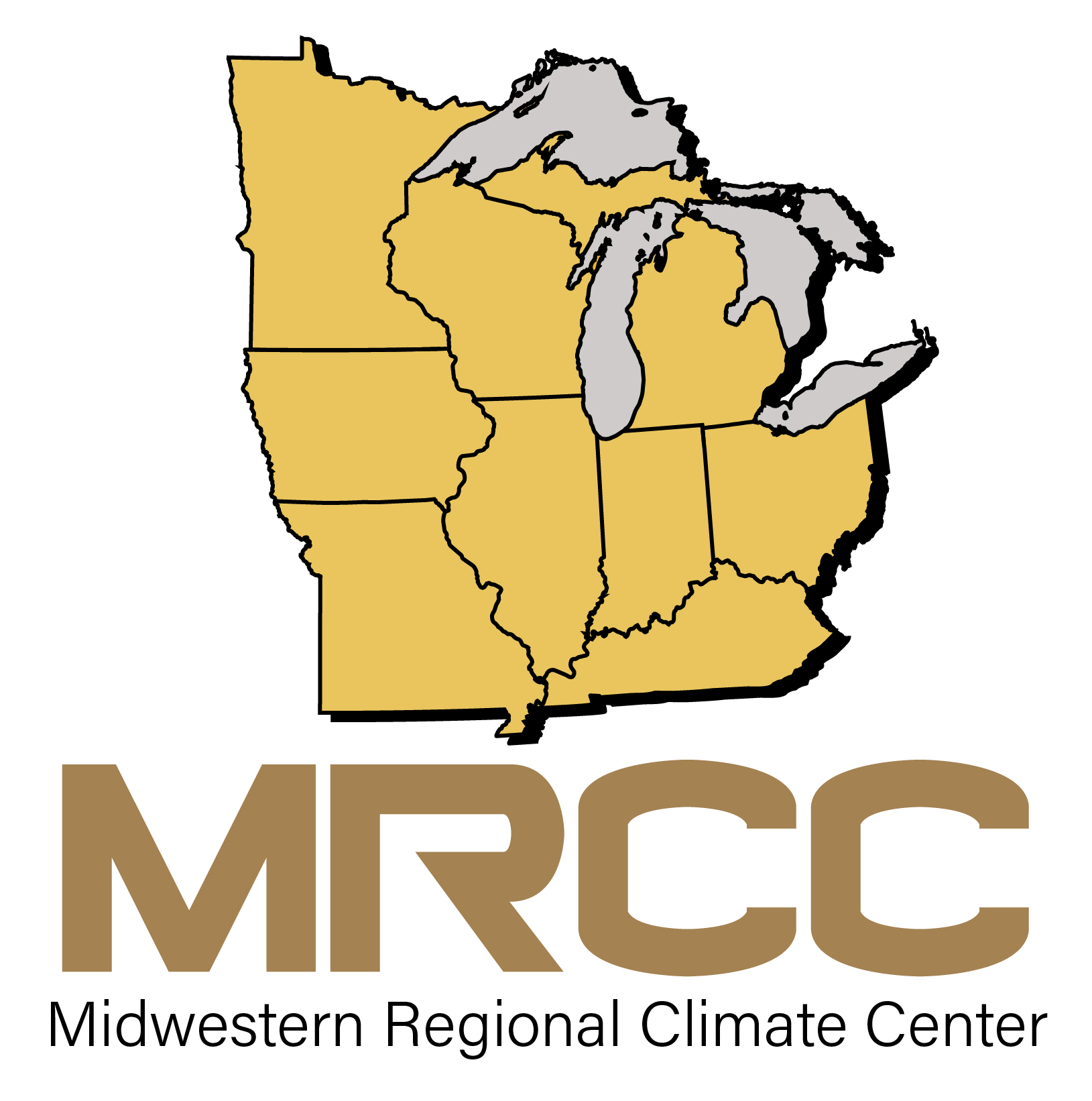
What do you think of when you hear the word climate? I would guess answers would range from ‘average weather conditions’ to ‘hot, muggy summers’ to ‘climate change’ to ‘environmental policies and politics’. What a range! Fields of climate can vary from paleoclimate studies (e.g., ice cores and tree rings), to applied climate science (e.g., architectural design and vector-borne diseases like West Nile Virus and Malaria), to climate modeling (e.g., lots of physical equations and computers), to climate change (e.g., ‘but the polar bears, Daddy!’), to climate services (e.g., data translated into information). Among all this diversity, the common thread is the consideration and correlations of what has occurred in our atmosphere historically to better understand and prepare for current and future decisions. Since the late 1800s, our country has had an organized effort to collect observational data (e.g., temperature and precipitation) at hundreds of locations so we can monitor[Read More…]
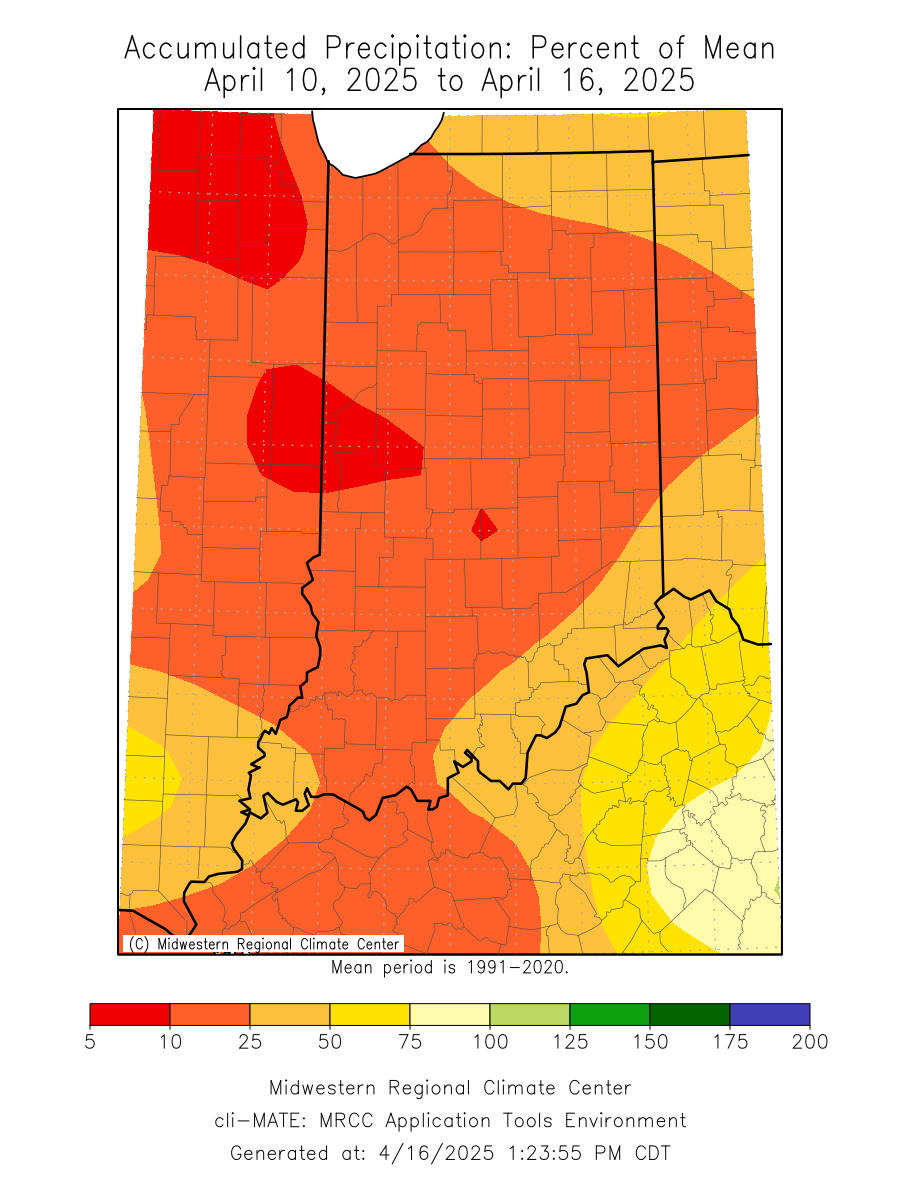
Despite the wet start to the month, the entire state saw less than 50 percent of normal rainfall from April 10 to 16, and in some cases, less than 10 percent of normal rainfall (Figure 1).
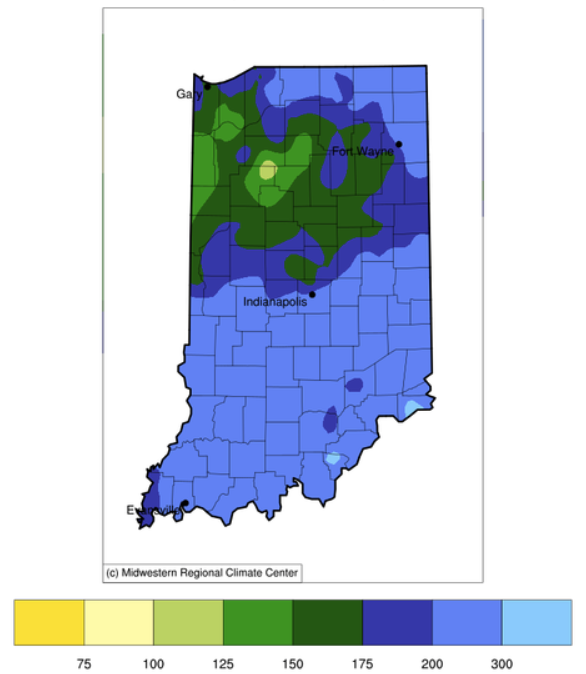
There is the common adage “April showers bring May flowers”. Apparently, Mother Nature utilized a rather liberal definition of “showers” last weekend and the end of last week by dumping over seven inches of rain in southern Indiana.
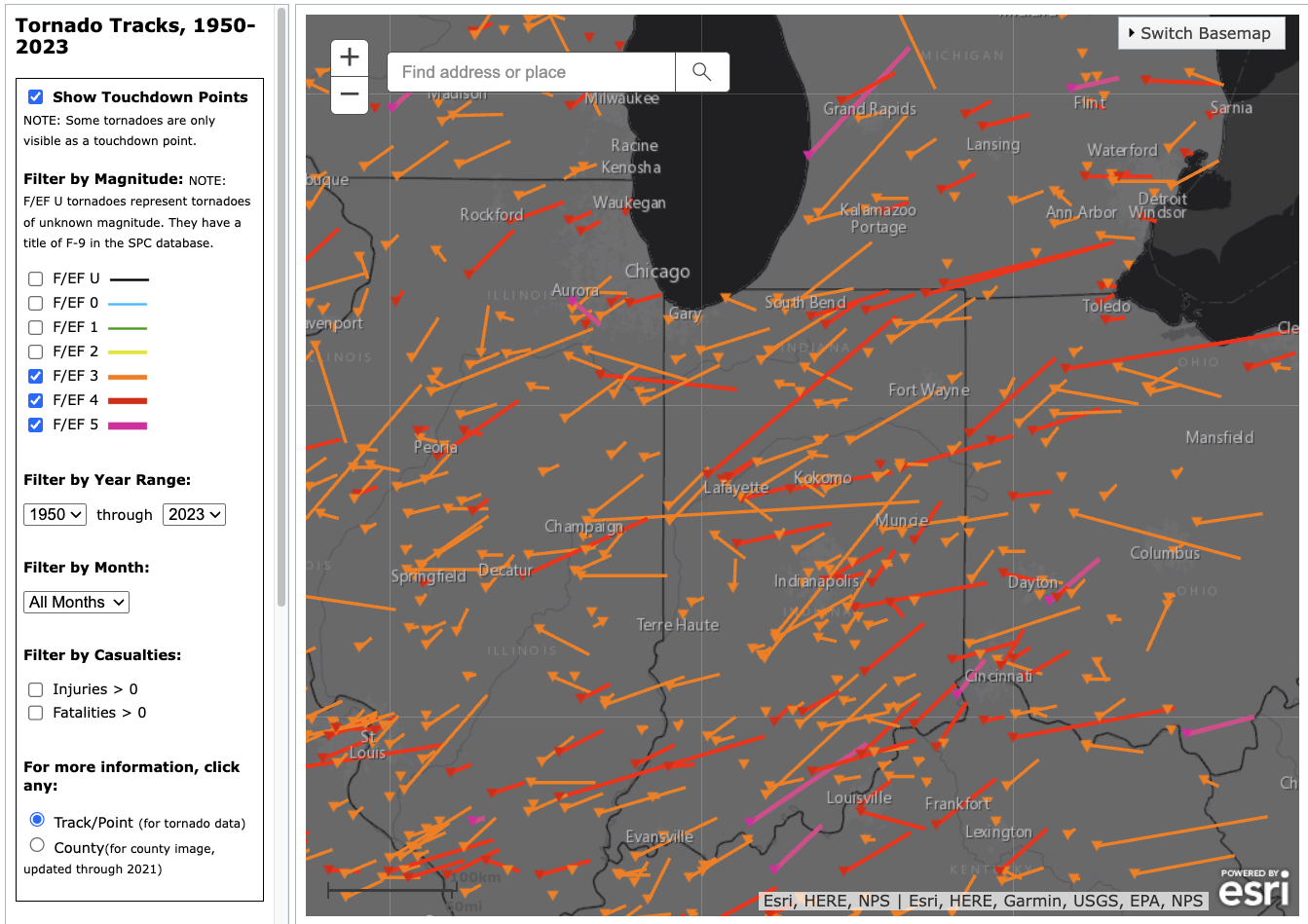
Indiana has already experienced several tornadoes this year with more certainly to come. Of course, this is not unusual since Indiana is often considered on the far northeastern edge of “Tornado Alley”.
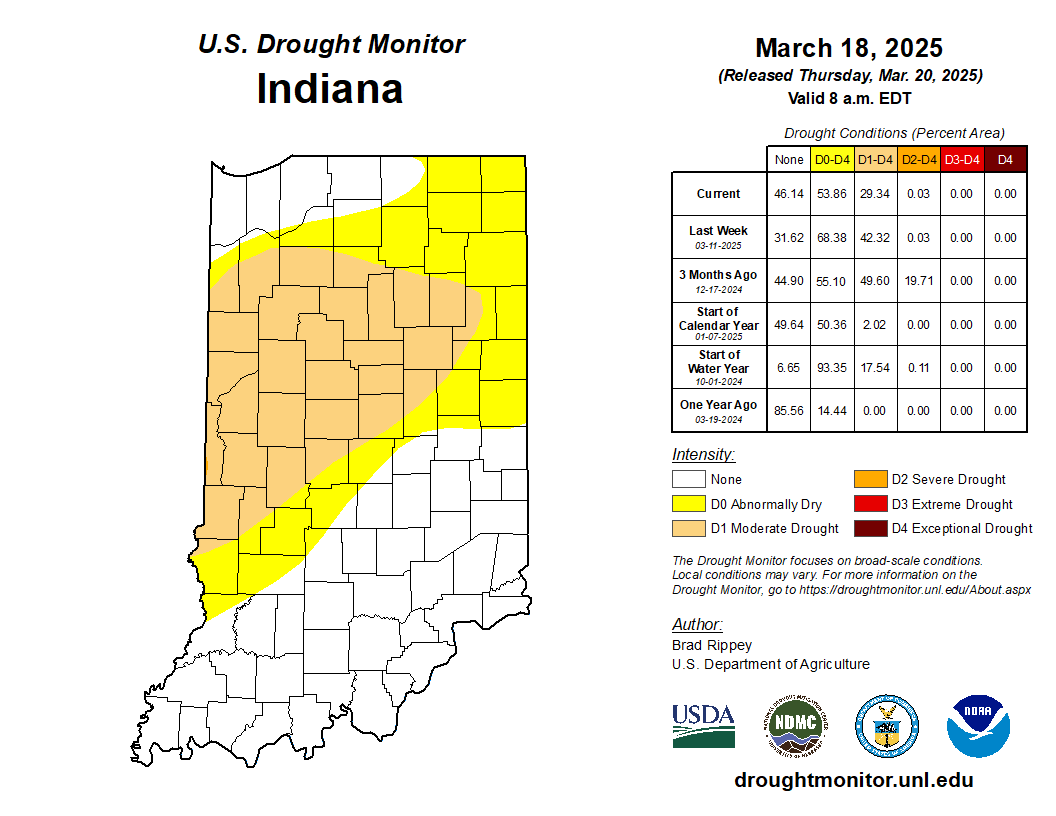
If one looks at the latest U.S. Drought Monitor map for Indiana (Figure 1), one might scratch their head – particularly as it has been raining and the chance for severe weather is in the forecast for this weekend.
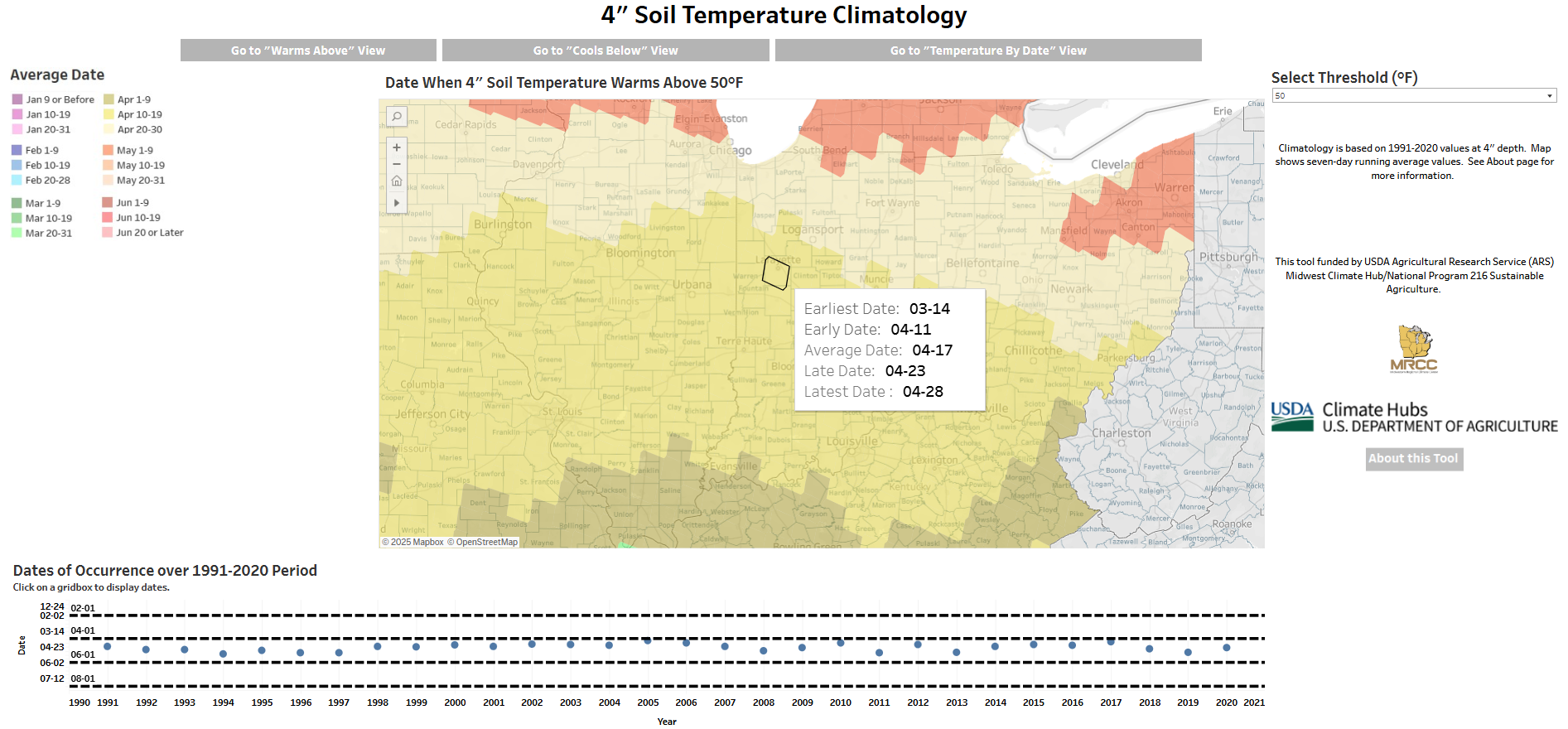
Spring field operations have already begun across the state, including tillage, anhydrous ammonia applications, and even some planting. Temperatures look up from here, but we cannot rule out periods of cooler conditions between now and May that could impact crop emergence. As of March 18, 2025, the 7-day average 4-inch soil temperature at the Purdue Agronomy Farm (ACRE) was 40.5°F, according to data derived from the Purdue Mesonet Data Hub. Daily soil temperature data can be accessed through the Data Hub, which can be downloaded to compute 7-day running average temperatures. A future update will allow 7-day soil temperatures to be readily accessible. How does the current soil temperature compare to those of previous years? A collaboration between the Midwestern Regional Climate Center (MRCC) and the USDA Midwest Climate Hub has resulted in the Soil Temperature Climatology Tool, which can provide that answer. This tool offers historical statistics for 4-inch[Read More…]
© 2026 Purdue University | An equal access/equal opportunity university | Copyright Complaints | Maintained by Pest&Crop newsletter
If you have trouble accessing this page because of a disability, please contact Pest&Crop newsletter at luck@purdue.edu.